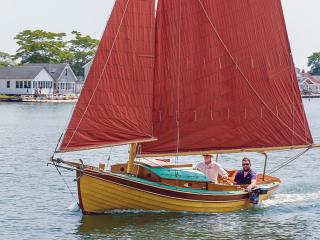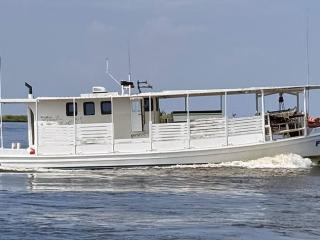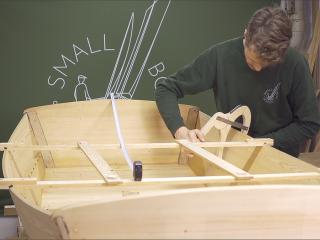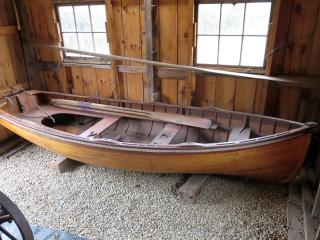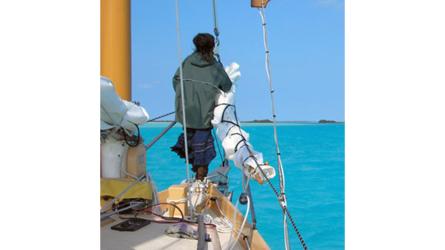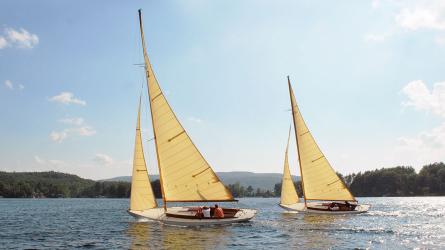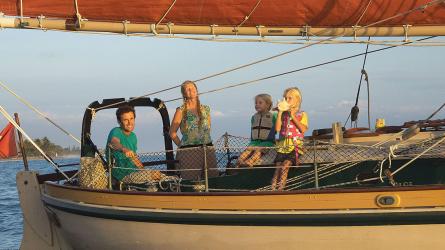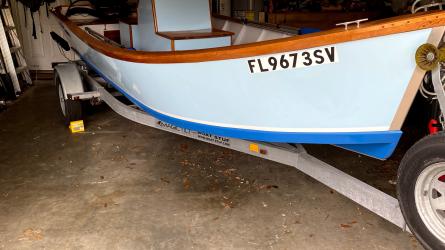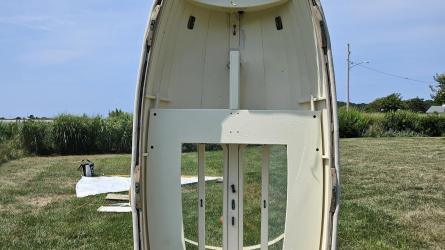March / April 2025
Windows on a Lost World
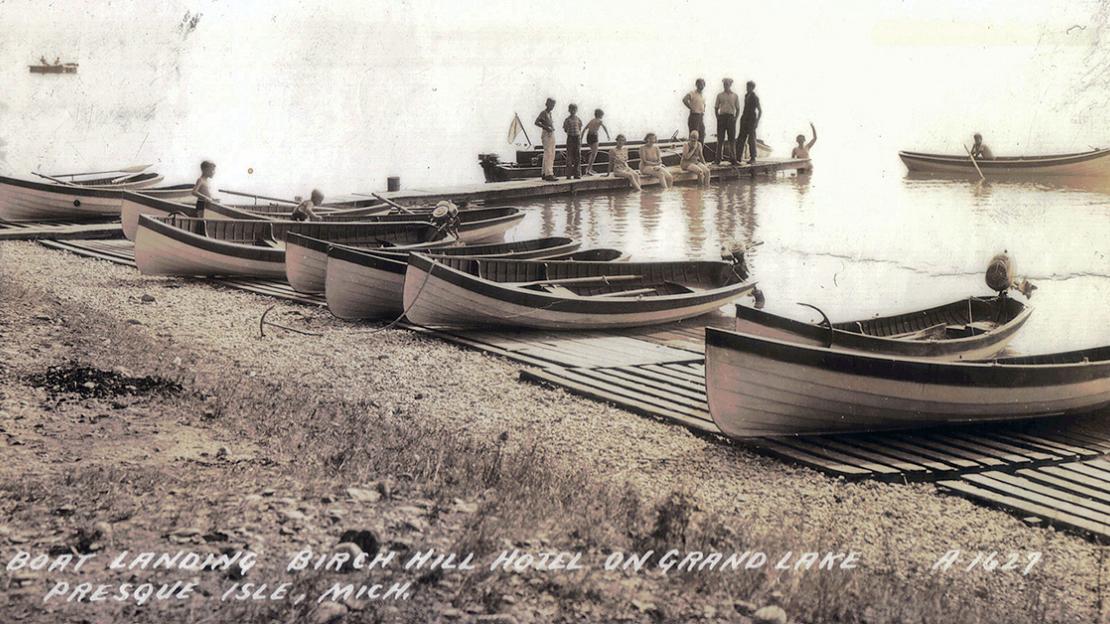
AUTHOR’S COLLECTION
The early-20th-century transition from rowing craft, which were ubiquitous in the upper Great Lakes at the turn of the last century, to motor-driven boats is evident in this 1940 postcard from Birch Hill Hotel on Grand Lake near Presque Isle, Michigan.
Generations ago, boats such as those on the waterfront at Birch Hill Hotel in Grand Lake, Michigan, shown in the photograph above, could be found at almost any lake across the Midwest. Today’s diligent seeker of small historic boats might find a weathered pair of oars at an out-of-the-way antique barn near Grand Lake, but finding one of the boats would be a far greater challenge. Unfortunately, little has been done in the upper Lakes region to preserve and document these craft; we have no counterpart to the historian John Gardner or to Connecticut’s Mystic Seaport Museum to celebrate the glory days of such boats. What’s required instead is a careful perusal of historic sources and well-planned crawls through widely scattered archives and museums. The accompanying photographs show a few examples sifted from my 40 years of such activity.
Boats have always been part of life in the upper Great Lakes. Native Americans began using dugout and birchbark canoes at least 3,500 years ago and very likely much earlier. The first use of planked wooden boats on the northern Great Lakes is not much easier to date than the first native craft. Records from fur traders and missionaries as far back as the late 1600s name various skiffs, wherries, wooden canoes, Greenland shallops, and York boats, or bateaux, barques, chaloupes, and nacelles in French sources. Except for those of the fur-traders’ York boats (see WB No. 144), surviving details of these craft are typically limited to dimensions and brief descriptions.
Fortunately, with the advent of photography at about the time of the Civil War or shortly after, visual evidence of the upper Lakes watercraft began accumulating. Photographs provide the clearest record we have of the region’s watercraft, including the earliest images of working sailing craft, some of which the maritime historian Howard I. Chapelle categorized as shallops and the French knew as chaloupes à voile, or sailing shallops.
To read the rest of this article:
Click the button below to log into your Digital Issue Access account.
No digital access? Subscribe or upgrade to a WoodenBoat Digital Subscription and finish reading this article as well as every article we have published for the past 50-years.
ACCESS TO EXPERIENCE
2-for-1 Print & Digital Subscription Offer
For this holiday season, WoodenBoat is offering our best buy one, get one deal ever. Subscribe with a print & digital subscription for $42.95, and we’ll give you a FREE GIFT SUBSCRIPTION to share with someone special.
1 YEAR SUBSCRIPTION (6 ISSUES)
PLUS ACCESS TO MORE THAN 300 DIGITAL BACK ISSUES
PRINT+DIGITAL $42.95
Subscribe
To read articles from previous issues, you can purchase the issue at The WoodenBoat Store link below.
 Purchase this issue from
Purchase this issue from
